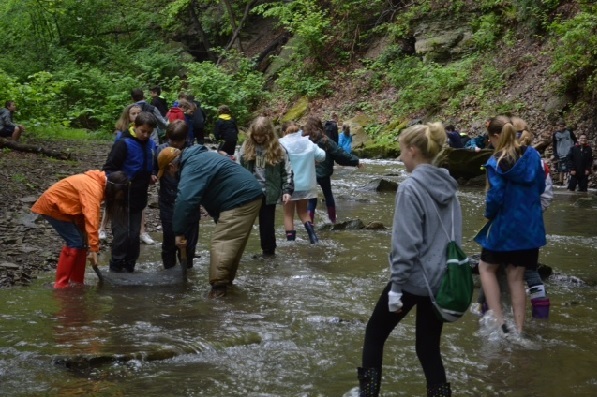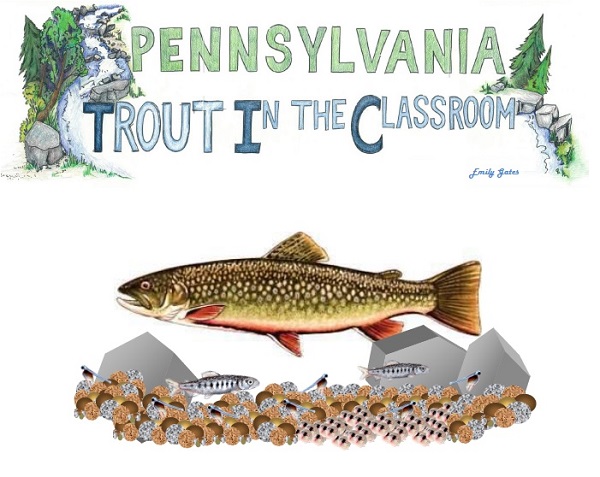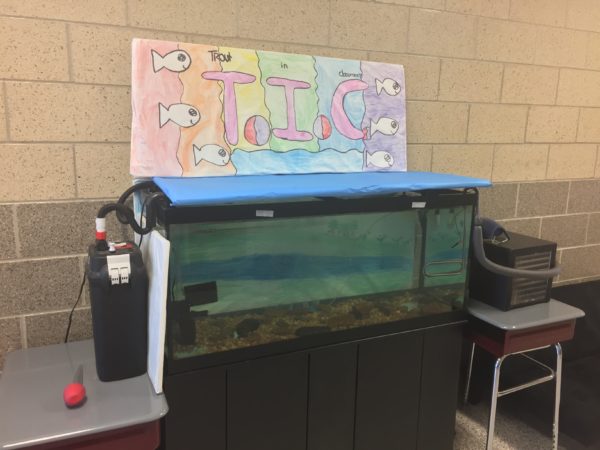
Trout in the Classroom engages Pittsburgh kids with cool aquaponics project
There’s something fishy going on in local classrooms.
This fall, kids in several area school districts—including South Fayette, Fort Cherry, Plum Borough and Pine Richland—will receive brook trout eggs, which they’ll raise to the fingerling stage (think the length of your finger). In the spring, the kids will release the trout into approved local waterways, learning about coldwater conservation along the way.
These schools are among the participants in Trout in the Classroom (TIC), an interdisciplinary, statewide program in which students from kindergarten to college age learn how to protect, conserve and enhance aquatic resources and act as stewards of our local watersheds.
Through a partnership between PA Fish and Boat Commission and PA Council of Trout Unlimited, TIC provides everything, including brook trout eggs and fish food, grant funding, curriculum resources, plus workshops for teachers and program partners like Chatham University’s Falk School of Sustainability.

Last year, TIC reached over 37,000 students across Pennsylvania, with teachers reporting they taught over 12,000 hours on topics related to the program.
“Local TIC program partners and the teachers are the backbones of the TIC program statewide,” says Amidea Daniel, the youth and women outreach coordinator for the PA Fish and Boat Commission. “Throughout the year, each teacher tailors the program to fit his or her curricular needs. Each program is unique.”
At South Fayette Middle School, TIC is an offshoot of Seeds of Change, a larger effort to incorporate sustainability practices into the daily operations of the school.
The project came about as the result of a conference by the same name. With “Expanding Innovation” grant funding from Remake Learning, students from South Fayette and Fort Cherry school districts gathered at Chatham’s Eden Hall campus to submit proposals for making their schools and communities more sustainable.

South Fayette eighth graders made a wish list of sustainability practices to incorporate in their school, which includes living walls with over 80 varieties of plants that improve air quality, compost bins, solar panels and a vegetable garden grown using aquaponics. Given the students’ enthusiasm for sustainability and the district’s commitment to project-based learning, TIC seemed like a natural fit.
TIC is just one example of how these projects are shifting the way kids learn about science, says Frank Kruth, the district’s middle school STEAM coordinator.
“There is a sense of ownership with students as they are the ones maintaining and growing with each aquaponic learning station,” says Kevin Shaffer, a fifth-grade teacher at Holiday Park Elementary in the Plum Borough School District.
His classes have been participating in TIC for three years. This year, his students have already studied the habitat best suited for the eggs and set up a tank that is chilled to 45 degrees and has moving water – the ideal conditions for the trout. Shaffer’s students successfully raise around 100 brook trout each year.
“Our goal with aquaponics learning is to increase both student engagement and hands-on learning opportunities with science,” Shaffer says.
Roy Weitzell, Chatham’s aquatic laboratory director, appreciates TIC for instilling practical animal husbandry and other scientific skills while enhancing the stock of Pennsylvania’s only native trout.
“TIC is great,” says Weitzell, because it helps students “make connections between abstract ecological concepts and the natural systems and biodiversity around them.”
Ryan Woods, a fifth-grade math and science teacher in the Pine-Richland School District, values the program for its important lessons, small and large.
“One thing the kids come away with is how much goes into keeping fish healthy,” Woods says, noting that some fish cannibalized each other in the classroom tanks last year, spurring conversation about what it takes for eggs to survive to adulthood.
Ultimately Woods most appreciates what TIC teaches children about environmental stewardship and the interwoven relationships among ecosystems.
“It’s not just about fish,” he says. “It’s about us, too.”